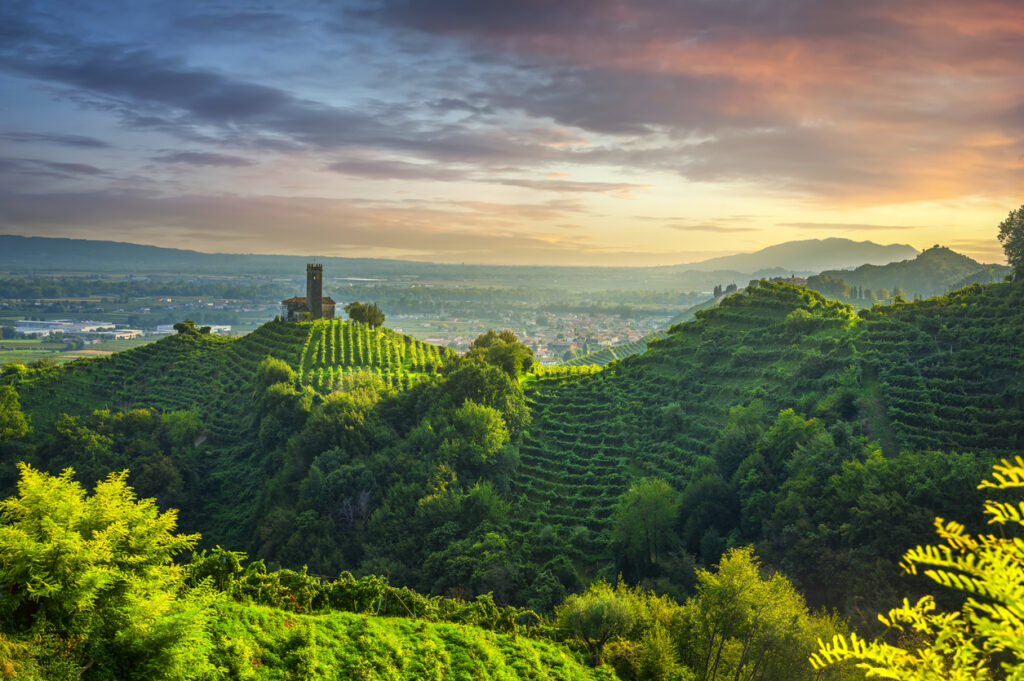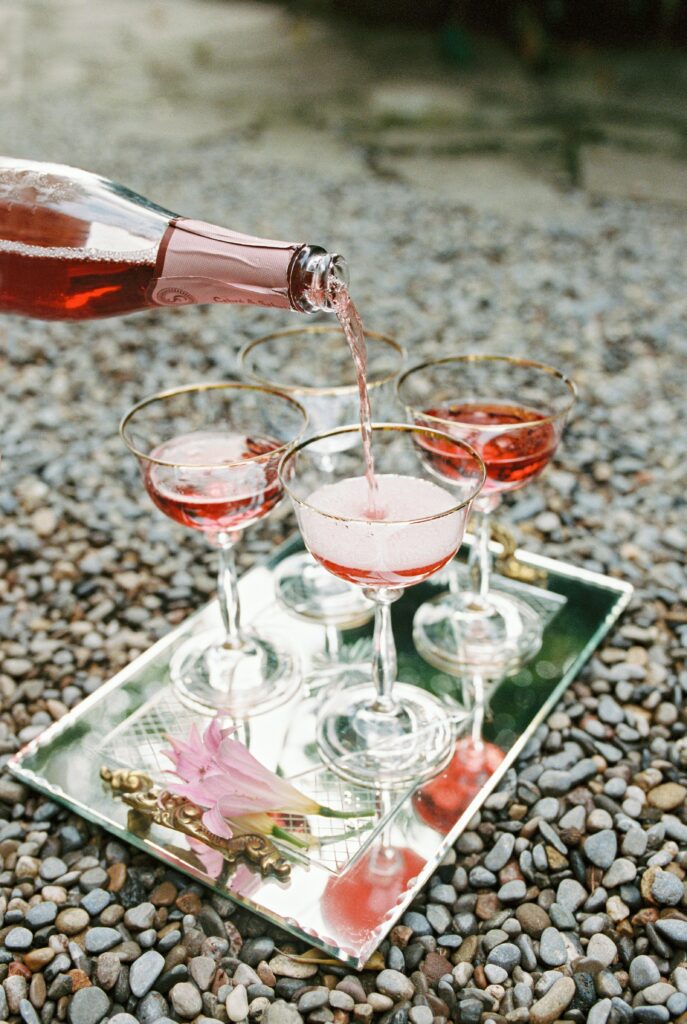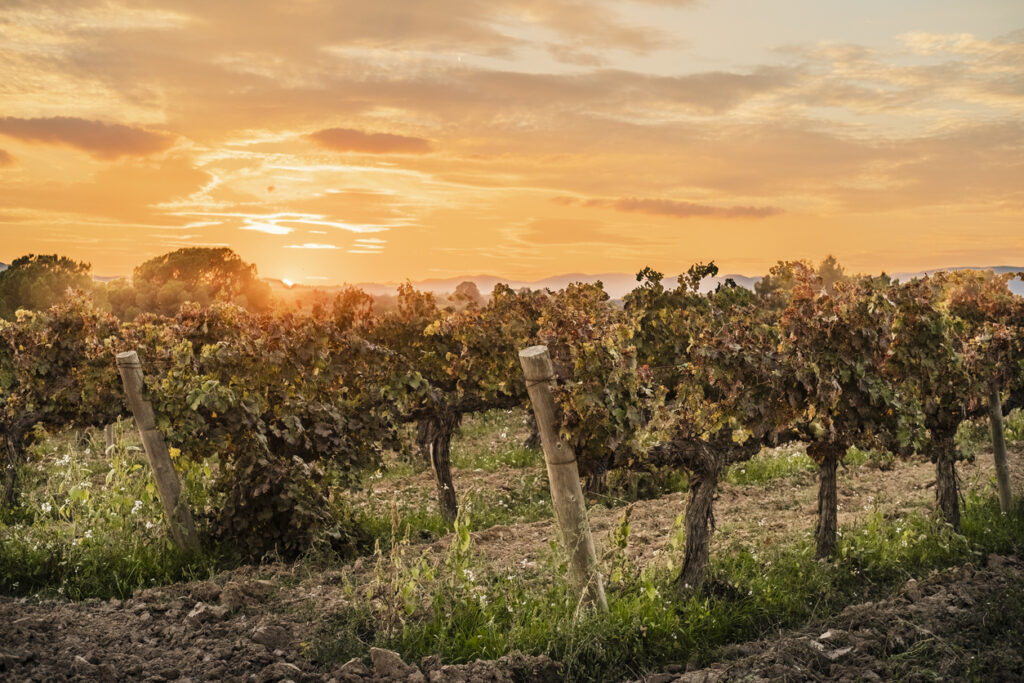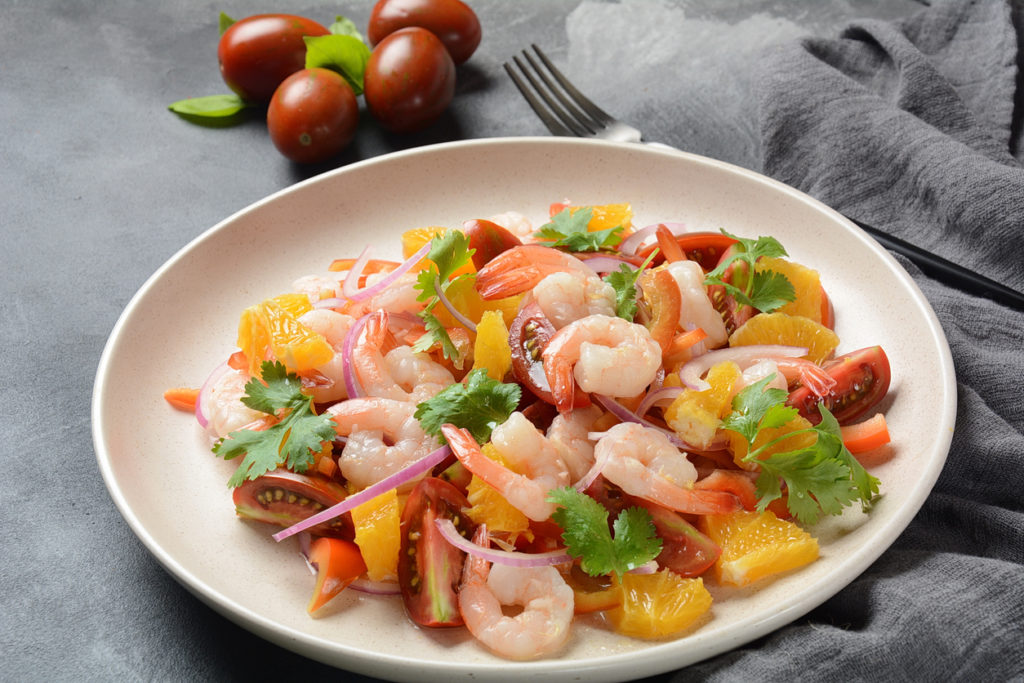Moscato is a lightly sparkling, low-alcohol, sweet white wine. Moscato wine is derived from the muscat family of grapes, which include over 200 grape varieties belonging to the Vitis Vinifera species that have been used in wine production – and as raisin and table grapes – around the globe for many centuries.
These grapes are today grown all over the world, though authentic Moscato d’Asti, and Asti Spumante. These are two popular varieties of Moscato wine which can only be made in Piedmont, Italy.

At a Glance
- Origin: Piedmont, Italy
- Regions: Piedmont, Trentino-Alto Adige, Pantelleria, California, Australia, Spain, Germany
- Sweetness: Very sweet to semi-sweet
- Color: Pale yellow to light red
- ABV: 5–13%
How is Moscato wine different from wine?
The grapes for Moscato wine are crushed to provide the grape juice. It is fermented in steel tanks at low temperature until an alcohol level of 6-7% ABV is reached. Fermentation is stopped by reducing the temperature further. This procedure allows to keep a higher residual sugar content compared to classic wines. This helps to preserve its unique flavor profile and sweetness. The low temperature fermentation also produces fewer tannins, creating a lighter body with more delicate flavors and aromas than most other types of wines.
Moscato Taste Profile
The most popular Moscato wine is Moscato d’Asti, which is semi-sparkling and is famous for its perfume-like fragrance and light body. It has a fruit-forward profile, with a sweet taste and notes of orange blossom, honeysuckle, almond, ginger and bright fruits such as green grapes, citrus and ripe peach. It also has a low alcohol content.
Moscato is highly aromatic and has a unique flavor profile that is both enjoyable and complex. With a light golden hue, Moscato wine contains subtle notes of ripe apricot, peach, honey, orange blossom and other fragrant flowers. The sweetness of the Moscato grape variety makes it an excellent choice for those who prefer sweeter flavors in their wines.

Moscato Taste Profile depending on region
The taste of Moscato can vary depending on its origins. but generally it features notes of fresh citrus fruit such as lemon, orange, dried apricot, peache and even hints of tropical fruits like pineapple or mango. When fermented with particular yeasts it also has slight effervescence that adds to its complexity.
The delicate bubbles and refreshing lightness of this wine – as well as its sweet flavor profile – make it a popular choice for a summer’s day, brunch, or even for serving as a dessert wine.
Varieties of Moscato Wine
Moscato is a variety of wine that has been produced and enjoyed around the world for centuries. This sweet, flavorful white wine is made from Muscat grapes – typically more than one variety – in regions as diverse as Italy, France, Germany, Hungary, Australia and California.
There are different kinds of moscato wine from regions all over the world. Take a look at the chapters below!

Moscato d’Asti
This is a lightly sparkling (frizzante), slightly sweet, low-alcohol white wine which is about 5.5.% ABV. Moscato d`Asti comes from the provinces Asti, Cuneo and Alessandria in Piedmont. Moscato is produced from 100 % Moscato grapes. It`s a DOCG wine therefore only Moscato wines from these regions can be called “d`Asti” (from Asti).
This Spumante is light and fresh with aromas of peach, pear and honey. Its low alcohol content and refreshing taste make it an ideal choice for those looking for a lighter alternative to other wines. The pressure in the bottle does not exceed 2,5 bar. This delightful sparkling wine has even been known to be served as an aperitif or as an accompaniment to desserts such as fruit tarts or biscotti.
Asti Spumante DOCG
Asti Spumante is a sparkling white wine from the Piedmont region of Italy. Made from the Moscato grape, this effervescent sweet and fruity beverage has been a popular choice for celebrations since its inception in 1870.
When poured into a glass, Asti Spumante emits an inviting aroma of white flowers, honey and ripe peaches. The bright golden color reflects its bubbly nature with tiny bubbles that dance to the top of the glass. Compared to Moscato d`Asti it has a higher alcohol content of 6-9 % ABV, a higher pressure of 4-5 bar carbon dioxide and is less sweet. The higher alcohol content and pressure is generated by a longer fermentation resulting in a drier sparkling wine.
If you like a fizzy drink Asti Spumante is your choice over a Moscato d`Asti.
Moscato d`Asti and Asti Spumante are only made out of the Moscato Bianco grape.

Moscato di Pantelleria
This is an amber wine made on the island of Pantelleria located between Sicily and Tunisia. It’s customary to drink this beverage on April 13, which is the feast day of St. Martin. The island of Pantelleria is home to two DOC-certified dessert wines. Both are made from the white grape variety Zibibbo (Muscat d’Alexandrie), which is also popular as a table grape.
The Moscato di Pantelleria, which is considered to be nobler, is characterized by a clear nutmeg, multi-layered abundance of fruit and flower aromas and a rather subtle sweetness. The extremely sweet Passito is more similar to a typical dessert wine. Both wines are also sold moderately fortified as Liquoroso and in the variants Pantelleria Moscato dorato (full-bodied, sometimes very sweet), Pantelleria Moscato spumante, Pantelleria Zibibbo dolce (frizzante) and Pantelleria bianco (dry still wine, rarely frizzante).
Moscato Rosa or Pink Moscato wine
This is a sweet pink version of the wine, which has berry flavors and a hint of spice, and originates from the Trentino-Alto Aldige region of Italy. Moscato Rosa is a type of wine that has gained popularity among wine drinkers in recent years. This e.g. Italian rose wine and rose sparkling wine, also known as Moscato spumante rosa or pink Moscato, is a sweet and fragrant alternative to traditional rose wines. The light pink color gives the drink an attractive appearance which makes it a desirable choice for events and gatherings.

Moscato Rosa is made by different methods depending on where it`s produced. In the Alto Adige and Trentino regions of North Italy the Moscato Rosa grape is used. Wineries in the new world normally use white Moscato wine and add some red wine (Merlot) to create the Pink Moscato. Moscato rosa is available from wine makers all over the world.
Red Moscato
It features more red wine characteristics and is more full-bodied. In the Alto Adige and Trentino regions of North Italy the Moscato Rosa grape is used. The wines are produced like red wine but due to the limited fermentation process very few tannins (bitterness) are in the wine.
In the new world Red Moscato wines are made by blending Shiraz and Moscato (Muscat of Hamburg). This blend has nectarine and berry flavors. It`s a rather light wine for a sweet wine with low acid levels. It`s a light fresh wine which is a great option if you`re not into rich and savory wines.
Regions and Varieties
While Moscato is a well-known variety of wine, it actually refers to a whole family of grapes – the ‘Muscat’ grape family – which are a variety of grapes that can be made into still, sparkling, red, white, rose, sweet and fortified wines.

The colors of this family of grapes can be just as varied as the wine they produce and can range from white grapes such as Muscat Ottonel to the yellow Moscato Giallo, the pink Moscato rosa del Trentino, and the near-black Muscat Hamburg. However, wines that are derived from Muscat grapes are all alike in their pronounced, floral aroma and sweet taste.
Moscato Bianco
Muscat grapes are so varied and diverse that they are thought to be the oldest domesticated grape variety, and there are theories that most families within the Vitis Vinifera grape variety originate from the Muscat grape.
Moscato Bianco is the family of white Muscat grapes that include Muscat Blanc, Alexandria, and Blanc à Petits Grains, and these have been cultivated for hundreds of years. These grapes are used to make DOCG-certified Moscato d’Asti as well as Asti Spumante. The DOCG certification stands for “Denominazione di origine controllata e garantita,” or, in English, “controlled and guaranteed designation of origin.”
Moscato Bianco world wide
Moscato grapes require a dry, sunny climate and cool nights in order to thrive, and they’re usually harvested mid-late season. Depending on the grape’s location and variety. Italy is of course the most famous producer of Muscato wine. It is best known as Muscato d’Asti from Asti in the Piedmont region of northern Italy.
However, Muscat grapes are grown and harvested all over the world. In France, they are used to make light, dry wines in Alsace and dessert wines like Beaumes-de-Venise in the Rhône Valley. Looking at Germany, Muscat grapes can be found in the Pfalz region under the Muskateller name. In Austria, you’ll find them in the Wachau region, and in Spain, they thrive in Penedès.

Food Pairing
Moscato d’Asti is sweet and mellow with low alcohol content. This makes it perfect to balance out the spiciness of dishes such as Sichuan beef, Thai crab curry, or spicy Cajun-style chicken wings.
It also pairs well with Salty snacks like nuts, cured meats, and cheese platters, which counterbalance the Moscato’s sweetness. However, Moscato doesn’t necessarily need to be used to balance out a dish. It is also perfect for accentuating sweet ones.
It makes a perfect dessert wine due to its light bubbles and sweet taste. Moscato d`Asti is ideal for pairing with tart apple desserts, meringue pies. You can even combine breakfast or brunch dishes such as pancakes or waffles. Moscato is even sweet enough to be a dessert in its own right!

How to Serve Moscato
Moscato should be served in a white wine glass or tumbler and should be served at around 50 degrees.
Fizzante and sparkling varieties are best served chilled. Fortified dessert Moscato should be served at cellar temperature (60 to 70 degrees ). Fortified wines are usually also served in smaller volumes of about three ounces.
Final Verdict
Whether you’re enjoying a glass of Moscato at a dinner party or enjoying a casual brunch with friends, this wine is sweet, refreshing, and easy to drink.
Moscato d’Asti is definitely the most famous of the Moscato varieties. This lightly sparkling wine has a low alcohol content, making it a great accompaniment to a variety of dishes.

